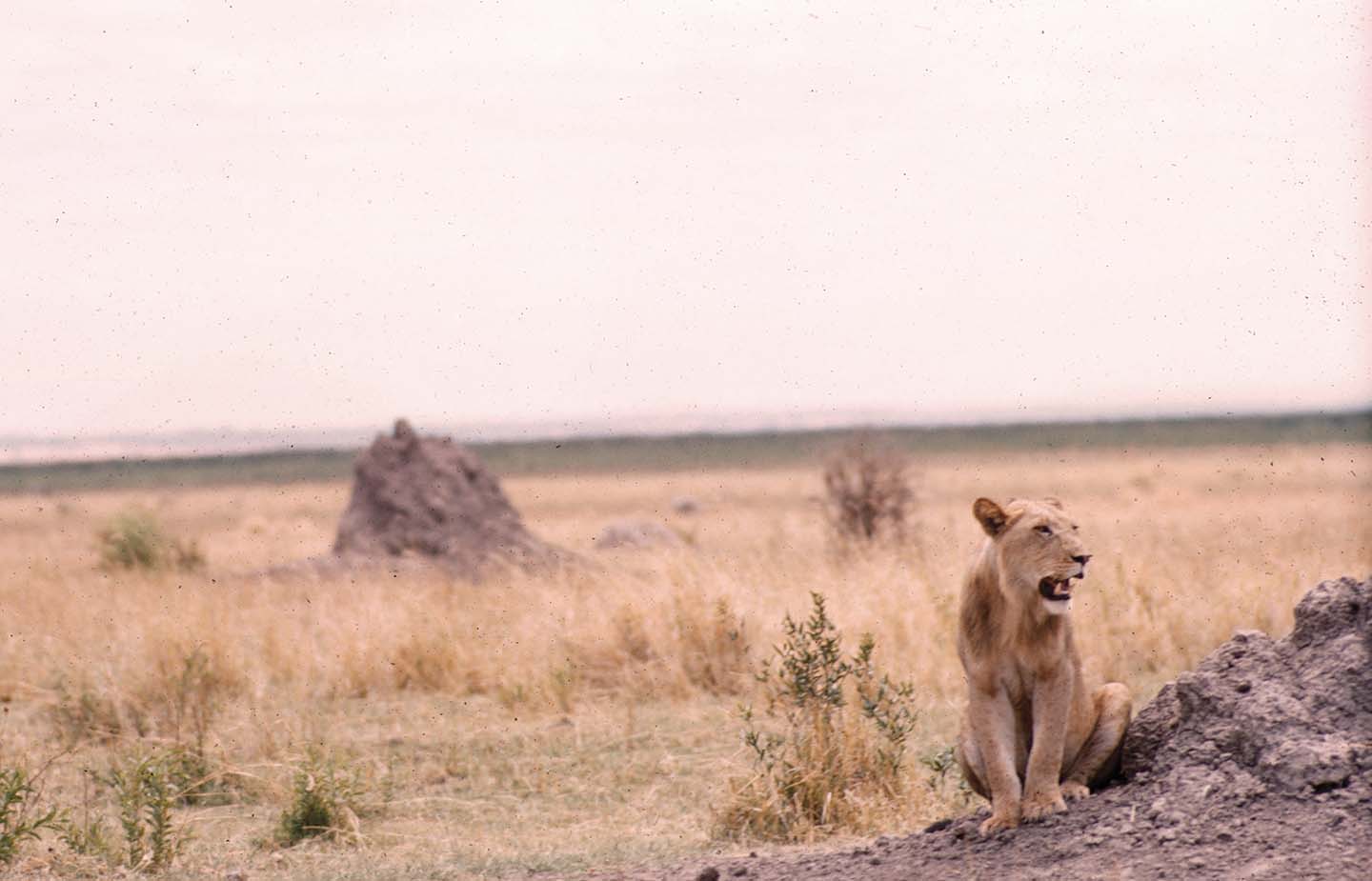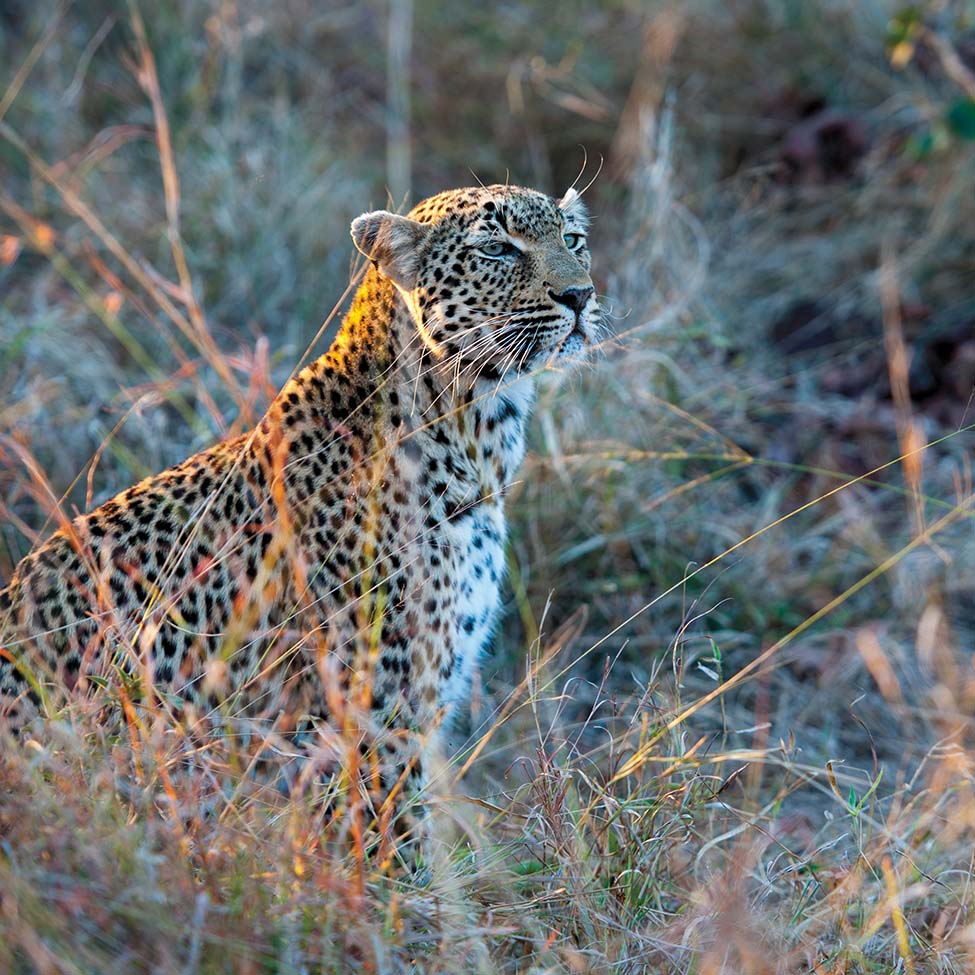The Carnivore Conflict
Wildlife biologist Andrew Stein ’99 is combining modern technology and ancient methods to save the world’s most extraordinary predators.
The magnificent leopard. A stealthy and secretive creature of elegance, slinking about beneath the murky veil of night’s shadow.
Known for their unrivaled adaptability, leopards inhabit the most diverse range of environments of any wild cat on Earth, from Sub-Saharan Africa to the Himalayan Mountains, the Russian far-east to the steamy rainforests of Southeast Asia, and even the desert environs of the Middle East.
Until recently, global leopard populations were believed to be healthy and largely unthreatened. And despite some data over the years painting a fairly optimistic portrait of leopard populations, their wide distribution and skillful avoidance of humans have always posed major challenges for researchers and conservationists, and an aura of mystery about these large cats has persisted.
So in 2014, when the International Union for Conservation of Nature was assembling a team to reassess the population status of leopards with the use of modern technology like GPS tracking, Andrew Stein ’99 was the perfect choice to lead it.
Stein, an assistant professor of natural science at Landmark College in Vermont, founded the organization Communities Living Among Wildlife Sustainably (CLAWS) in 2014, which works to address conflict between humans (typically ranchers and farmers) and large predators, including lions, wolves, hyenas, and Stein’s personal favorite, leopards.
“I had always loved animals, particularly big cats, and as a zoology major at Conn, I was fascinated by lions,” Stein recalls. “But it wasn’t until I went to Kenya during my junior year study away and I saw my first leopard in Samburu National Reserve that I just said, ‘This is my animal,’ and I quickly realized, unlike lions and tigers, there had been hardly any work done on them.”
Sadly, Stein and his team discovered that leopards are in much worse shape globally than anybody thought, having lost three-quarters of their natural habitat, mostly to deforestation. The previous status report simply hadn’t had the advanced technology that Stein used, and the vastly more accurate data revealed some alarming trends and elevated the status of leopards to “vulnerable,” one level below “endangered.”
“I think leopards are victims of their own success in some ways, because they’re so secretive they’ve managed to fly under the radar while we’ve been unaware of the problems they’re facing,” Stein says.
As specific geographic examples, Stein points to large portions of Asia and Africa that have experienced dramatic declines in leopard populations.
Two-thirds of China was believed to be full of leopards, but Stein’s team found only a few small patches around protected areas. And in West Africa—one region scientists and conservationists thought was a leopard haven—now only a few remnant populations are scattered throughout a handful of different countries. In Central Africa, deforestation is occurring at such a rapid pace that the habitat for leopards is quickly vanishing.
The seed for CLAWS was planted while Stein was finishing up his Ph.D. in wildlife fisheries and conservation in Namibia and he had an epiphany one night talking to local farmers.
“At the first farmer’s meeting I went to in Namibia, I told everybody I was there to study leopards and asked if there was anything I could do to help,” Stein says.
“This one guy raised his hand and said, ‘We hate predators, but we hate predator researchers even more because you guys tag and track these animals and know where they are but don’t tell us, so I don’t have a chance to protect my livestock.’”
This marked a major turning point, because Stein realized that farmers might be willing to take preventive measures to protect their livestock if they are simply provided information about the predators’ habits and locations, which would result in fewer retaliatory killings.
After finishing his Ph.D., Stein did a postdoctoral project in Botswana in the Okavango Delta for three years as the research coordinator for a large predator camp that studied lions, leopards, cheetahs, spotted hyenas and African wild dogs.
When Stein later returned to the U.S. to teach, he got word of a bloody and ongoing conflict between lions and local ranchers back in Botswana that was wiping out the large cats. Stein decided to act by creating CLAWS.
The results of the reprisal killings of lions for eating livestock in Botswana were devastating. In 2013, just before CLAWS was created, 50% of the local lions were killed in that one year alone. And one of the most popular methods for killing the lions—by poisoning a carcass the lion was likely to later to feed on—also had the unintended consequence of killing off large populations of other scavengers that were vital components of the ecosystem. But Stein’s efforts quickly began to reverse the damage.
“Since we started this program in 2014, the lion population has steadily been recovering, with eight new cubs born in 2019, and a significant drop in killings,” he says.
Achieving those results in such a relatively short period of time has required a creative blend of science, technology, cultural education and relationship-building.
First, Stein decided to compose his field staff entirely of local citizens of Botswana, which helped develop trust among the organization and the villagers.
Second, Stein had a novel idea: He asked the local ranchers and villagers to name in their native language each of the lions CLAWS had tagged with tracking collars. The hope was that this would show people that, like domesticated animals, lions have different personalities and different habits, so they shouldn’t all be treated with disdain and violence just because one lion happens to be a troublemaker.
Some names represented nobility and adulation, such as “Mayenga,” meaning “decorated by the gods.” Other names sent slightly less inviting messages, like “Kufadukuze,” which translates to “if you are searching for cattle, you will get caught.”
Ominous warnings to Kufadukuze notwithstanding, the strategy proved more successful than Stein could have imagined.
He was amazed to see that after the lions had been named and his team had regularly shared information about their movements and various adventures, many of the villagers who previously feared and loathed the cats began to develop a hint of affection for them. Some would even express concern if they hadn’t heard a recent update on a particular lion and would ask Stein how she was doing and if her cubs were healthy.
Another innovative idea he had was to set up a mobile alert system—the first of its kind—so if a lion comes within a few kilometers of a village, the satellite collar pings an automated system that sends a text message to the cellphones of anybody nearby so that precautions can be taken to protect livestock. The lion may be disappointed that his favorite buffet is closed when he gets to the village, but he’ll pad back off into the brush to live another day. So far, the data shows that people who actually heed the mobile alerts have cut their wildlife conflicts by half.
Stein has also resurrected herding practices in one community in Botswana that served the people well for centuries but have faded in recent generations as the pastoral lifestyle has given way to a village system. Where the young boys of a village once worked as herders, they are now busy going to school. Stein knew he needed to develop a new system.

